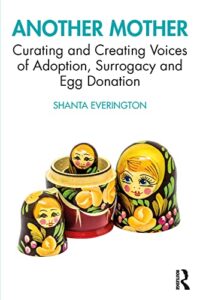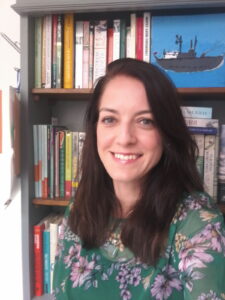The previous post in our series on the PhD journey and beyond explored the nature of research in Creative Writing. Following up on this, recent PhD graduate, Shanta Everington, shares her experience of adapting her practice-based PhD research for publication.
Much has been written about turning the traditional academic thesis into a monograph. As a researcher undertaking a practice-based PhD, my journey to book publication was a little different. A PhD in Creative Writing typically comprises two connected components – a book length piece of creative writing (in my case, experimental life writing) and an accompanying critical commentary exploring the process of producing the creative writing.
Many Creative Writing PhD students write novels or poetry collections which are then published by mainstream or independent publishers on completion. As a previously published novelist, I initially planned for my life writing to be published as a stand-alone creative non-fiction book, and the content of the critical commentary to find its way to an audience via peer-reviewed journal articles and conference papers.
Contemporary explorations of motherhood have primarily focused on the biological mother raising the child she gave birth to. My research project, ‘Other Mothers’, aimed to give voice to women who become mothers through the alternative routes of adoption, surrogacy and egg donation, and their silent partners – the birth mothers, surrogate mothers and egg donors – who make motherhood possible for them.
I interviewed six women, drawing on a range of interdisciplinary approaches, and created a body of experimental life writing, which aims to expand our understanding of what it means to be a mother.
The research presents the stories of a mother via egg donation and adoption; an egg donor; someone who became a mother through surrogacy in India; a surrogate mother; an adoptive mother of two who was herself adopted as a baby; a birth mother in her seventies who gave her baby up for adoption fifty years ago. My own personal experience of pregnancy loss and adoption offers a seventh voice.
At the end of the PhD, I approached a few literary agents who handled creative non-fiction. Although I received a few encouraging rejections, I wasn’t hitting the mark for the mass-market route. Then I had my eureka moment!
Through creative practice as research, I developed an experimental approach to writing lives – a hybrid form of curated material (edited interview and quotation collage) and created material (poetry, reimagined scenes and lyric essay), a literary tapestry building on Jo Parnell’s idea of the literary docu-memoir. There is a duality to the research’s original contribution to knowledge which lies in both its expansion and analysis of life writing techniques. Both components – the experimental life writing AND the critical meta-narrative analysing the artistic, ethical, personal and political considerations involved in transforming life into literature – are of equal significance and belong together. After a rethink, I decided to pitch a book consisting of both parts. In some ways, this might limit my readership – for example, women considering adoption, surrogacy and egg donation might be interested in a book of women’s stories but perhaps not so interested in critical analysis of form. Yet in other ways, it expanded the book’s potential readership, to anyone interested in motherhood, gender and women’s studies, life writing studies, the sociology of reproduction, creative non-fiction writing approaches, oral history and ethnography studies.
It seemed that an academic publisher would be my best bet for these audiences. Pitching to an academic publisher was quite unlike my previous experience submitting to literary agents, the gatekeepers of commercial publishing. Although I didn’t need an agent, there was a new set of gatekeepers to get past – the peer reviewers.
My external viva examiners helped me frame my writing as a form of autoethnography, connecting my own personal experience of motherhood and the experience of other mothers to wider cultural, political and social understandings. After looking at a range of academic publisher lists, I found a commissioning editor of an ethnographical series who I thought might be interested in work spanning both literature and social sciences.
Emily Briggs at Routledge expressed interest and helped me rework my proposal. At this stage, I still planned for the book to be published in its original structure: creative writing first and critical commentary second. Emily sent me a similar creative-critical title that she’d commissioned, Situated Writing as Theory and Method: The Untimely Academic Novella by Mona Livholts, which presented the theoretical framework before the novella; Emily and I agreed a similar structure for my book, switching the original order.
Peer review flagged up problems with connotations of ‘other’ in research title ‘Other Mothers’, and so, ‘Another Mother’ was chosen to represent the triangular nature of motherhood via adoption, surrogacy and egg donation. I took on board suggestions for beefing up existing content and adding additional material, mainly in the areas of politics and power, as well as gender identity issues dissecting with motherhood.
As a creative writer responding to feedback from sociologists, I had to remain clear on my research aims and parameters. Brochner and Ellis (2016) set out two forms of autoethnography: analytic and evocative – the former developing theoretical explanations of phenomena and the latter offering a narrative presentation that opens up conversations and evokes emotion. My work was firmly the latter, raising questions to which there are no easy answers, offering a discursive site on motherhood. The book presents a collage of voices and forms, offering stories which are open to multiple readings and interpretations.
Dr Shanta Everington is Associate Lecturer at The Open University, where she gained her PhD in Creative Writing. A creative and critical writer working across a range of forms, much of Shanta’s writing explores recurring themes of difference, identity and belonging. Previous books include novel Marilyn and Me (2007), narrated by a young woman with a learning disability, and young adult dystopian novel XY (2014), exploring gender identity. A consultant for the Royal Literary Fund, working as a Writing Fellow and a Reading Round Lector, Shanta is also a member of the National Association of Writers in Education (NAWE).
Another Mother: Curating and creating voices of adoption, surrogacy and egg Donation was published by Routledge on 8th June 2023.


